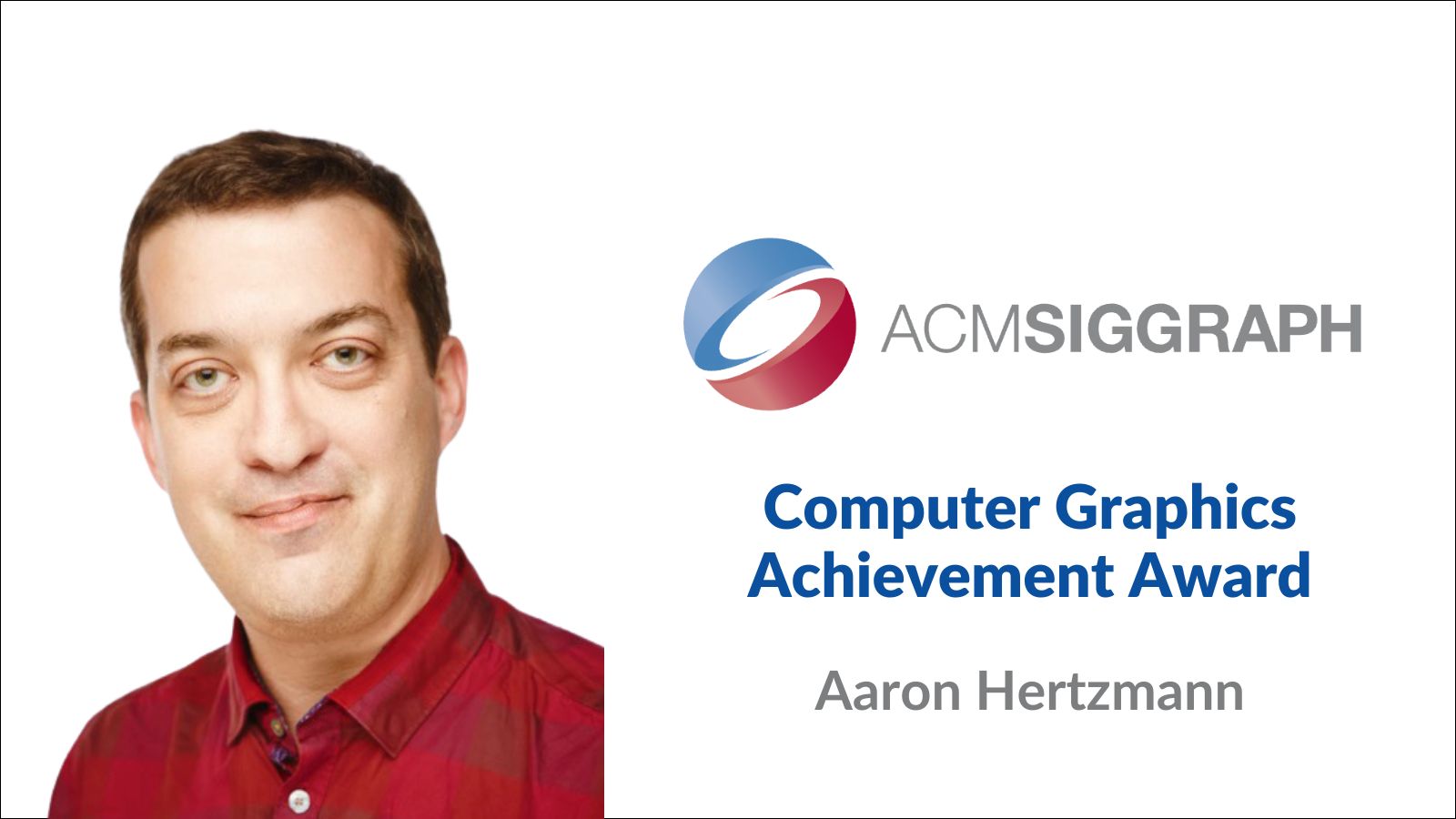Rice CS alumnus (B.A. ’96) and Adobe Principal Scientist Aaron Hertzmann was awarded the Computer Graphics Achievement Award for his contributions to computer graphics.
The award is given by the Association for Computing Machinery (ACM)’s SIGGRAPH professional society “for outstanding achievement in computer graphics and interactive techniques.”
Hertzmann brought a curiosity about how humans perceive the world to the field and his work, studying and implementing new ways to replicate and manipulate visual phenomena via computer modeling. His contributions extend to multiple areas of computer graphics and visual media, from character design to fluid motion modeling to better replicating human motion
Hertzmann double majored in Computer Science and Art at Rice before continuing to NYU for his postgraduate studies. He originally planned to focus on image-based rendering but changed course after hearing a talk at a SIGGRAPH conference in 1997.
The talk centered around an algorithm that attempted to paint like an artist. Hertzmann has painted on and off throughout his career as a creative outlet and source of inspiration (though he now uses digital instead of physical media), so he was familiar with the process. He’d seen painting algorithms like this before but thought they could be improved. “I said, ‘That’s not the way I paint,’” Hertzmann recalled and developed a new painting algorithm based on his experience.
This was his first paper, published at SIGGRAPH 1998. After a few more years of work, it became clear that it would be easier to mimic style by using a single reference image. That line of thinking led to his 2001 paper Image Analogies and a framework for processing images by example.
Thus began a career of exploring the relationship of art and science. “When I was taking art classes at Rice…I always felt confused by the instructions and judgments from the professors,” he said. “Are these things ‘rules’ or just stuff they made up? Where did they come from?”
He went on to become a professor at the University of Toronto, eventually taking a position as Principal Scientist at Adobe. There, he’s continued researching machine-made art with papers and essays like Can Computers Create Art? He likens the job to his time in academia conducting research and authoring papers.
His latest project is perspective theory. “We learn in school about linear perspective from the Renaissance as being the ‘rules’ for how to make pictures, but it’s not how artists actually work,” he said. “It actually creates all kinds of distortions in our photography.”
Whether manipulating one object within an image or the perspective of the entire thing, Hertzmann is in the early stages of developing new photographic techniques that better capture the experience of being where a photograph was taken.
“We can develop techniques to adjust a photo to better reflect what it is to be in that environment,” he said. Whether or not that research will inform any of the products at Adobe is yet to be seen.
Wherever he is, he’s usually busy. Hertzmann was actually in the middle of SIGGRAPH work when he got the news he won their achievement award. Once he’d had time to process (and sleep off the illness he was fighting), it finally sank in.
SIGGRAPH describes Hertzmann’s contributions to computer graphics as “pioneering.” Image Analogies, for example, put forward an approach to machine-created images that would be built upon by modern-day image generation models like Generative Adversarial Networks (GANs) and diffusion models.
“I find it hard to judge that because I never really know,” he said when asked what he thought of the impact of his work. “I published all these papers and some of them have gotten lots of citations, but it’s so hard to see ‘oh this one led to this thing that led to this thing and now everyone’s using that.”
He added that the award felt validating, saying he “definitely appreciate[s] the recognition” for providing some concrete proof of the impact his contributions had.

